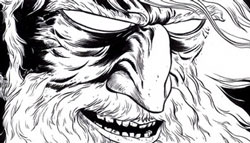 You’ve probably seen any number of how-to books about writing comics, coloring, etc. Comics industry veteran Buddy Scalera has just published a book that shows how those pieces fit together: “Creating Comics from Start to Finish”. Buddy talks to Tim about his reasons for writing the book, the business side of comics, how looking behind the curtain can increase the magic, and the future of comics.
You’ve probably seen any number of how-to books about writing comics, coloring, etc. Comics industry veteran Buddy Scalera has just published a book that shows how those pieces fit together: “Creating Comics from Start to Finish”. Buddy talks to Tim about his reasons for writing the book, the business side of comics, how looking behind the curtain can increase the magic, and the future of comics.
Then, Tim and guest reviewer Shawn Williams take a close look at Buddy’s book.
Podcast: Play in new window | Download

 Mike White’s “
Mike White’s “ Brandon’s back in Japan (and yes, we’re OK following the earthquake!), and he and Tim discuss I Kill Giants, by Joe Kelly and JM Ken Niimura. In approaching an emotional topic through fantasy, blurring the lines between the two, is it effective or confusing?
Brandon’s back in Japan (and yes, we’re OK following the earthquake!), and he and Tim discuss I Kill Giants, by Joe Kelly and JM Ken Niimura. In approaching an emotional topic through fantasy, blurring the lines between the two, is it effective or confusing? Armed with an awesome press pass, Tim walks the floor of Seattle’s
Armed with an awesome press pass, Tim walks the floor of Seattle’s  In San Francisco! Tim finally meets in person some of the
In San Francisco! Tim finally meets in person some of the  Jamie Delano never set out to be a comics writer. His high school friend, a bloke by the name of Alan Moore, was big into comics, but Delano was not a comics reader. It was only at Moore’s suggestion, many years later, that Delano tried out, doing some work for Marvel UK, then landing the job writing Moore’s John Constantine character in the Hellblazer title as it launched in 1987. The rest is history. Delano is nice enough to give some of his time to Tim for an interview.
Jamie Delano never set out to be a comics writer. His high school friend, a bloke by the name of Alan Moore, was big into comics, but Delano was not a comics reader. It was only at Moore’s suggestion, many years later, that Delano tried out, doing some work for Marvel UK, then landing the job writing Moore’s John Constantine character in the Hellblazer title as it launched in 1987. The rest is history. Delano is nice enough to give some of his time to Tim for an interview. In the years of doing this podcast, we’ve encountered many comics from Japan, but not many about Japan. One in the latter category is “Tonoharu”, about an American teaching English in Japan (an occupation that some of us on this podcast know a bit about!); the second installment of the four-book series was recently released.
In the years of doing this podcast, we’ve encountered many comics from Japan, but not many about Japan. One in the latter category is “Tonoharu”, about an American teaching English in Japan (an occupation that some of us on this podcast know a bit about!); the second installment of the four-book series was recently released. When last we checked in with
When last we checked in with  A horror anthology? Some may advise against it, but artist
A horror anthology? Some may advise against it, but artist  You have the details all ironed out and the project is well under way. But you don’t have money to publish it when you’re done, or some other financial barrier exists. What to do? One option:
You have the details all ironed out and the project is well under way. But you don’t have money to publish it when you’re done, or some other financial barrier exists. What to do? One option: